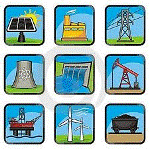Department of Agricultural Economics: Undergraduate Research

Op-Eds from ENSC230 Energy and the Environment: Economics and Policies
Date of this Version
Fall 12-13-2019
Document Type
Editorial
Citation
Ntaganda, Pascal. Op-Ed from ENSC 230. Energy and the Environment: Economics and Policy, University of Nebraska-Lincoln, Department of Agricultural Economics, Fall 2019.
Abstract
Climate is changing rapidly. Some scientists say that the effects are now irreversible. The foundation on which government organizations, some of them being the congress in the United States, is not strong enough to stop climate change. The fact that the approaches being taken target market-based situations, makes it inefficient. Governments create solutions to reduce the impacts, as they make sure that these activities do not affect their economies. The level at which effects of climate change threaten life and resources of a country, is what stimulates the economy to adapt to the strategies set to mitigate climate change. In other words, it should not be the other way around. Globally, the economies should adapt to strategies set to mitigate climate change, with reduced focus on rapid economic development, but rather environmental, resources and economic sustainability.
Diagnosing barriers to climate change adaptation (Susan et al) is a great approach to use in adaption to climate change. Countries like Mexico, have been affected greatly by the changes or different climatic events. Models predict the continuous increase of temperatures and dryness in Mexico (Liverman et al). This relates to the different economic activities such as agriculture which need a lot of water to be fruitful. The fact that Mexico is getting drier, will affect the food security in the country, especially its agriculture based on rain fed and irrigation agriculture. Although the assessment is mostly based on statistical and computational models, they have proved to predict close and precise conditions when it comes to climate and weather. These models are also continually calibrated and developed for better predictions. They are now being used in many incidences of decision making, especially when it comes to complicated topics with many different variables like environmental based processes. Tackling the decision making levels at the critical points is what makes the process essential by fixing the hinderances at these levels. The agricultural sensitivity, capacity and vulnerability in Africa, assesses the different impacts of climate change (Downing et al). Mostly, the countries are affected by the weak structured and developing economies, which are not strong enough to withstand the strong vigor climate change comes with. These countries have really small GNP per capita of not more than $1285 regionally, with agriculture contributing a great percentage. Although this article segments the countries into specific geographical groups such as North and Central located countries, it still creates a good picture of the conditions in these nations. If climate change threatens the economic activities on which their economy is mostly based, of which agriculture has a big percentage, they get to take climate change mitigation seriously. The rapid increase in population also creates a necessity to further reduce effects to health in these countries.
Focusing on a narrower spatial scale, a country like Rwanda would be affected greatly by not being ready for climate change. Actually, Rwanda has structured its economy to be green. Climate resilience is now a hot trend since some countries understand that climate change cannot and will not be stopped. With the high rural poverty in the country, strategies of climate proofing have been structured for specifically this condition, for efficient and sustainable development (Siegel et al). I love the way the strategy is segmented into targeting small areas, from which larger ones are built. In simple terms, this is like targeting a building unit of an entire building to later create a strong structure. Some measures being taken may involve human empowerment since human capital is Rwanda’s great resource.
Education makes it easy for people to understand the disseminated policies. Rwanda now has million-dollar projects to strengthen the country’s climate mitigation and resilience. Some include increasing forests in the country and transitioning to clean energy like solar. Projects and businesses related to environmental sustainability have high and favorable tax exemptions. Since Rwanda is a small country, we are talking about it being about seven times smaller than Nebraska, this makes it difficult to structure projects and economize the land in the country to support agriculture and other infrastructure too. The issue then comes to creating climate resilient infrastructure.
Everything is built on data and information. In Rwanda, data collection and storage are rapidly being developed. The concern comes to ensuring that this information from data guides to long term development. An example is determining if the climate information available is good enough to make decisions and predictions for farmers and other climate impacted activities. The longevity of the impacts of the information could risk future generations if not precise. We are talking about diseases like Malaria which are influenced by climate could get deadlier in the future. The failure to include climate information can therefore create blind spots in long term plans of a country like Rwanda, or even other worldwide countries. (Jones et al)
Included in
Environmental Indicators and Impact Assessment Commons, Natural Resources and Conservation Commons, Oil, Gas, and Energy Commons, Other Environmental Sciences Commons

